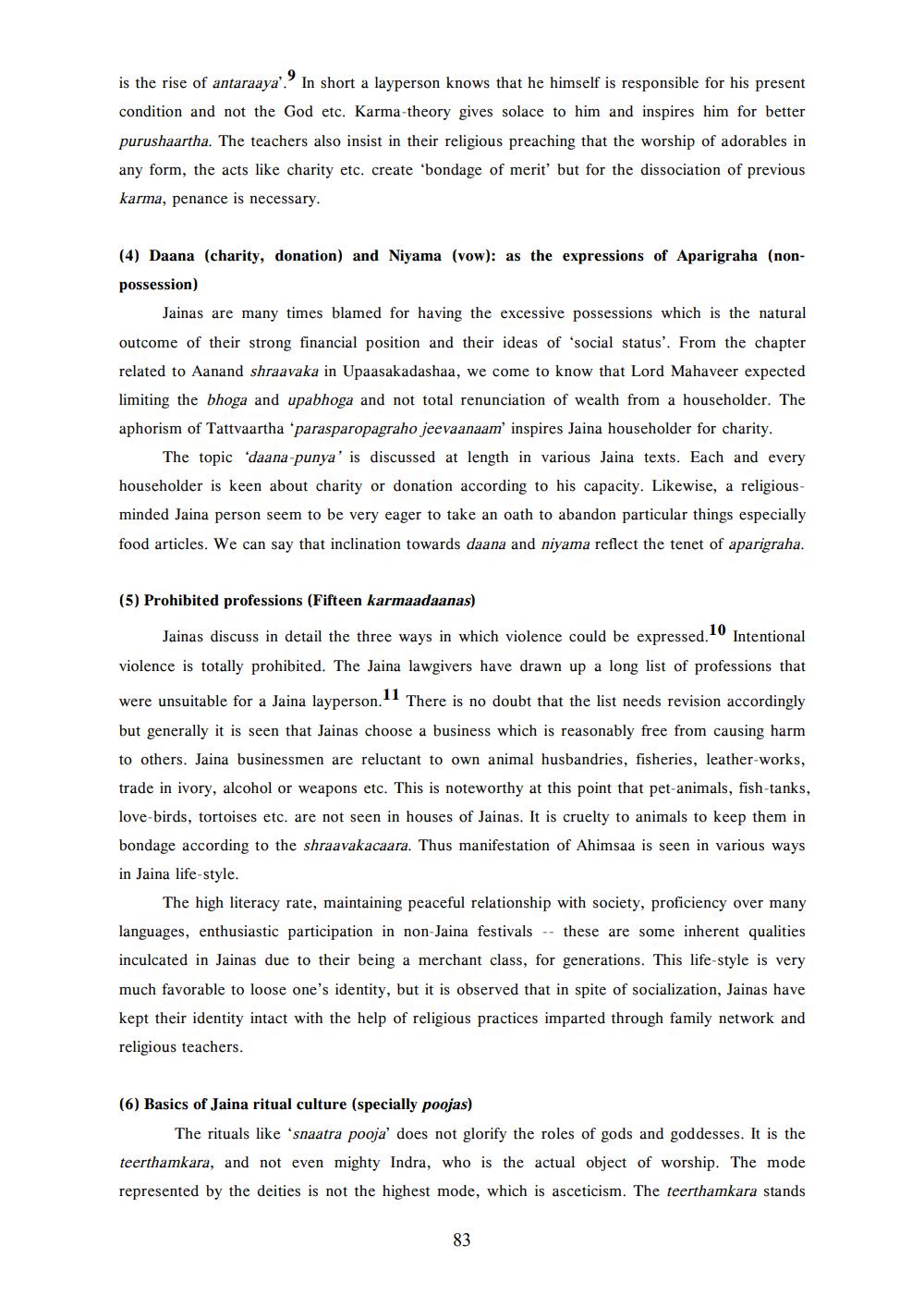________________
is the rise of antaraaya'.' In short a layperson knows that he himself is responsible for his present condition and not the God etc. Karma-theory gives solace to him and inspires him for better purushaartha. The teachers also insist in their religious preaching that the worship of adorables in any form, the acts like charity etc. create 'bondage of merit' but for the dissociation of previous karma, penance is necessary.
(4) Daana (charity, donation) and Niyama (vow): as the expressions of Aparigraha (nonpossession)
Jainas are many times blamed for having the excessive possessions which is the natural outcome of their strong financial position and their ideas of 'social status'. From the chapter related to Aanand shraavaka in Upaasakadashaa, we come to know that Lord Mahaveer expected limiting the bhoga and upabhoga and not total renunciation of wealth from a householder. The aphorism of Tattvaartha 'parasparopagraho jeevaanaam' inspires Jaina householder for charity.
The topic daana-punya' is discussed at length in various Jaina texts. Each and every householder is keen about charity or donation according to his capacity. Likewise, a religiousminded Jaina person seem to be very eager to take an oath to abandon particular things especially food articles. We can say that inclination towards daana and niyama reflect the tenet of aparigraha.
(5) Prohibited professions (Fifteen karmaadaanas)
Jainas discuss in detail the three ways in which violence could be expressed. Intentional violence is totally prohibited. The Jaina lawgivers have drawn up a long list of professions that
were unsuitable for a Jaina layperson." There is no doubt that the list needs revision accordingly but generally it is seen that Jainas choose a business which is reasonably free from causing harm to others. Jaina businessmen are reluctant to own animal husbandries, fisheries, leather-works,
trade in ivory, alcohol or weapons etc. This is noteworthy at this point that pet-animals, fish-tanks,
love-birds, tortoises etc. are not seen in houses of Jainas. It is cruelty to animals to keep them in bondage according to the shraavakacaara. Thus manifestation of Ahimsaa is seen in various ways in Jaina life-style.
The high literacy rate, maintaining peaceful relationship with society, proficiency over many languages, enthusiastic participation in non-Jaina festivals -- these are some inherent qualities inculcated in Jainas due to their being a merchant class, for generations. This life-style is very much favorable to loose one's identity, but it is observed that in spite of socialization, Jainas have kept their identity intact with the help of religious practices imparted through family network and
religious teachers.
(6) Basics of Jaina ritual culture (specially poojas)
The rituals like 'snaatra pooja' does not glorify the roles of gods and goddesses. It is the teerthamkara, and not even mighty Indra, who is the actual object of worship. The mode represented by the deities is not the highest mode, which is asceticism. The teerthamkara stands
83




